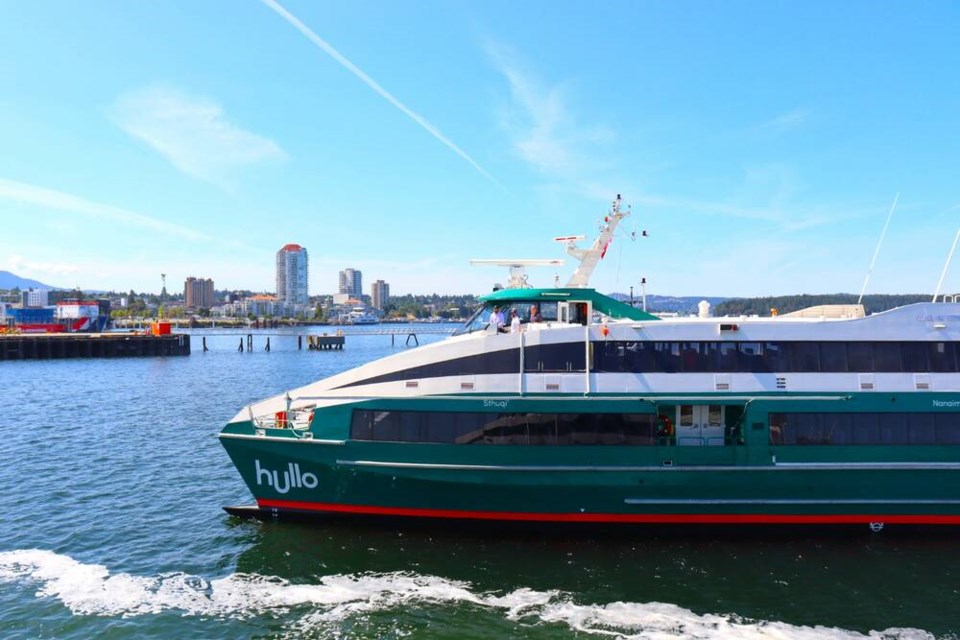The first sailing of the new Hullo ferry left Wednesday morning as planned just after 10 a.m. under clear skies following a two-day delay in launching the Nanaimo-Vancouver walk-on service.
Ferry officials handed out brightly coloured goodie bags that included branded keychains, pens and phone stands to celebrate the event.
A total of 189 passengers rode the first high-speed catamaran departing Nanaimo. The two boats each have a capacity of 354. The company has said it is deliberately keeping numbers low as it rolls out the service.
“We were thrilled with the positive reaction we got from our passengers,” said Alastair Caddick, chief executive of Hullo, who described the day as “exhilarating.”
The catamarans performed well in Wednesday’s moderate wind conditions, he said.
A widespread power outage in Nanaimo and strong winds kept the company’s two catamarans in dock on Monday, when the 70-minute foot-passenger service between downtown Nanaimo and downtown Vancouver was scheduled to start. Sailings were cancelled on Tuesday as well.
Caddick anticipates that cancellations due to poor weather will be infrequent during the winter. “We should be able to operate the majority of time that B.C. Ferries does.”
From now until month’s end, Hullo will have a reduced schedule of two departures per day from the each side.
This will “give all of our crews additional time to get their sea legs and get additional training, and provide better mentorship,” Caddick said.
More crew members than usual are sailing. Staff are working in teams, with more experienced mariners serving as mentors to junior crew members, he said.
Federal rules govern the number of crew members required on each sailing, which is also dependent on the number of passengers. Caddick said between six and 12 crew members will typically be working per ship.
The company is aiming to double the number of sailings next month.
Passengers will notice that there are seat belts in some of the seats, typically in a front row. They are required by regulators under a high-speed craft code. “Our vessels travel at 40 knots” — faster than other ferries on the coast, Caddick said.
Despite the delayed start, Nanaimo Mayor Leonard Krog said he is optimistic about the service. “We were all disappointed. This is not the way we wanted the ferry service to start,” he said. “Having said that, they will work out their problems.
“I am still absolutely confident this is going to be a very successful ferry service that benefits all of us here in Nanaimo and on the Island who want to get to downtown Vancouver quickly and safely.”
The delay in starting full service upset a lot of people who had hoped to use the service, Krog said, adding that he appreciates the company’s safe approach.
Corry Gervais, chief executive of the Nanaimo Chamber of Commerce, agreed. “I’m happy that they are taking safety so seriously and that gives me a lot of confidence,” he said. “We are just going to keep on supporting them here in Nanaimo.”
>>> To comment on this article, write a letter to the editor: [email protected]



